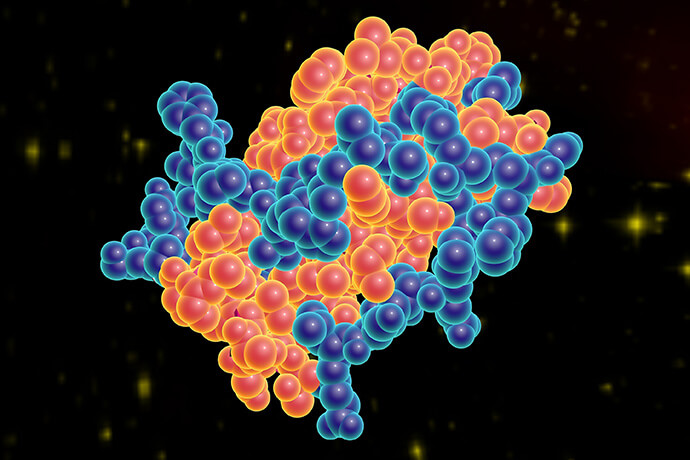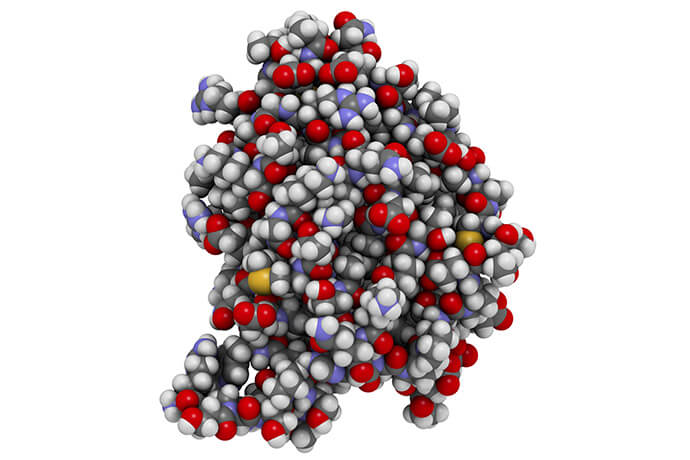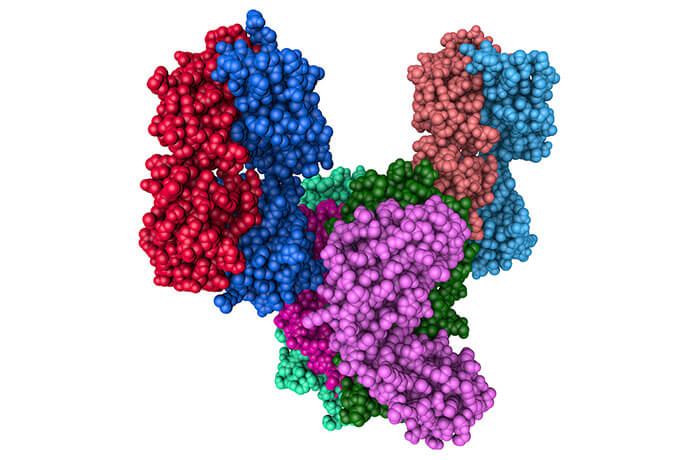Cancer is a complex disease that involves a delicate interplay between the tumor cells and the host immune system. Cytokines play a critical role in this interplay, mediating the communication between different cells of the immune system and modulating immune responses. As such, cytokine profiling is becoming increasingly important in the study of cancer and is being used to support research, diagnosis, and treatment decisions.
Luminex technology is a powerful tool for cytokine profiling in oncology research. It is a bead-based assay system that allows the simultaneous measurement of multiple cytokines in a single sample. The technology has revolutionized the field of cytokine research, making it possible to study complex cytokine interactions and profiles with greater speed and accuracy than ever before.
How Luminex Technology Works?
Luminex technology is based on the principle of multiplexing, which means that multiple analytes can be measured in a single sample in a single reaction. The technology uses microscopic beads that are coated with specific antibodies that target specific cytokines. The sample is mixed with the bead suspension, and the cytokines in the sample bind to the antibodies on the beads. The bead suspension is then read on a Luminex instrument, which detects the bound cytokines. This process can be repeated multiple times with different bead sets to measure multiple cytokines in a single sample.
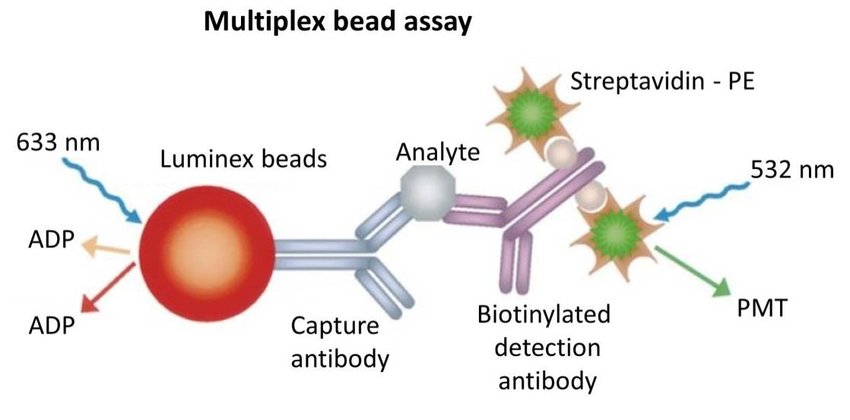 Bead-based multiplex assay using Luminex technology (Kuen et al., 2017)
Bead-based multiplex assay using Luminex technology (Kuen et al., 2017)
Advantages of Luminex Technology
Traditional cytokine assays, such as ELISA, have limitations that make them less suitable for the demands of oncology. These assays often require multiple assays to profile multiple cytokines, lack high-throughput capabilities, and are prone to cross-reactivity and interference.
Luminex technology overcomes these limitations by allowing for high-throughput, multiplex profiling of multiple cytokines in a single sample. The bead-based assay system used in Luminex technology reduces the potential for cross-reactivity and interference and allows for the simultaneous analysis of multiple cytokines in a single sample. This technology is being used to advance our understanding of tumor immunology, support immunotherapy approaches, and discover new cancer biomarkers.
Applications of Luminex Technology in Oncology Research
In recent years, Luminex technology has been used to profile cytokines in cancer patients, providing valuable insights into the complex interplay between the tumor and the host immune system.
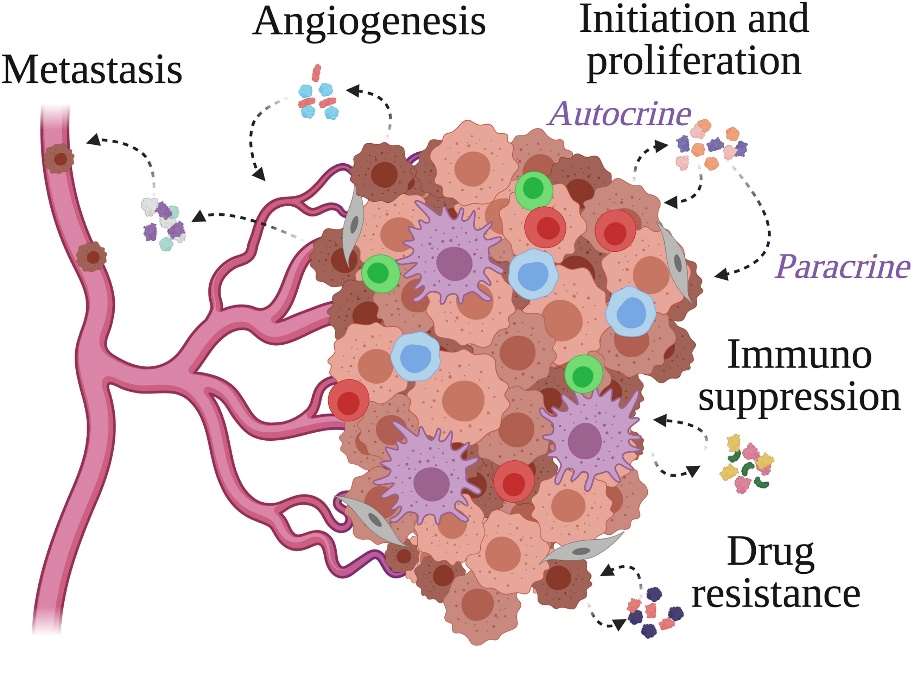 Cytokine actions within the tumor microenvironment (Kartikasari et al., 2021)
Cytokine actions within the tumor microenvironment (Kartikasari et al., 2021)
- Monitor the effectiveness of cancer therapies
Luminex technology can be used to monitor the impact of cancer treatments on the cytokine profile of a patient. By analyzing the levels of cytokines before and after treatment, researchers can gain insight into the effectiveness of cancer therapies and the potential for immunotherapy.
- Identification of biomarkers
Luminex technology is also being used to identify new biomarkers for cancer. By profiling cytokine levels in cancer patients, researchers are able to identify patterns and correlations between cytokine levels and different stages of cancer development and progression. This information can then be used to develop new diagnostic and prognostic tools for cancer.
- Advancements in tumor immunology
Luminex technology is being used to advance our understanding of tumor immunology. By profiling cytokines in cancer patients, researchers are able to gain insights into the complex interactions between the tumor and the host immune system, including the identification of cytokine profiles that are associated with different stages of cancer development and progression.
- Supports personalized medicine
Luminex technology can also be used to support personalized medicine in oncology. By profiling the cytokine levels of individual patients, researchers can identify cytokine profiles that are unique to each patient, which can then be used to inform personalized cancer treatment plans.
In conclusion, cytokine profiling is an important tool in the study of cancer and Luminex technology is uniquely suited to meet the demands of this field. With its ability to profile multiple cytokines in a single sample and its reduced potential for cross-reactivity and interference, Luminex technology is an important tool for advancing our understanding of tumor immunology and discovering new cancer biomarkers. The future of Luminex technology in oncology is bright, with the potential for continued advancements in cytokine profiling and the discovery of new cancer biomarkers.
References:
- Kuen, Janina. Influence of 3D tumor cell/fibroblast co-culture on monocyte differentiation and tumor progression in pancreatic cancer. Diss. Universität Würzburg, 2017.
- Kartikasari, Apriliana ER, et al. "Tumor-induced inflammatory cytokines and the emerging diagnostic devices for cancer detection and prognosis." Frontiers in Oncology 11 (2021): 692142.


